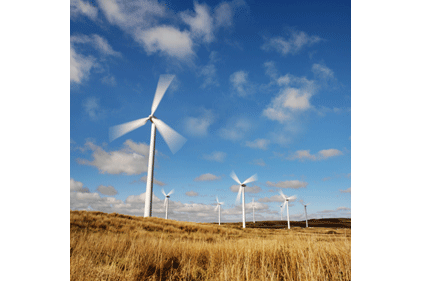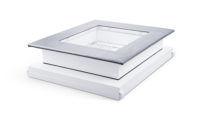Pardon the play on words but it’s time to shed some light on an important topic.
Because lighting accounts for 30 percent or more of a building owner’s energy costs, it’s important to keep up with new industrial lighting advances. Some of the industry’s most interesting developments involve greater efficiencies, controls and new technologies.
There is no “one-size-fits-all” lighting approach, so each owner must review options and choose the best solution for their individual operation.
Lighting landscape
 Cold food processing plant operators traditionally have used high energy, 400-watt metal halide systems 24 hours a day, seven days a week. Thankfully, there are multiple options to reduce that energy use.
Cold food processing plant operators traditionally have used high energy, 400-watt metal halide systems 24 hours a day, seven days a week. Thankfully, there are multiple options to reduce that energy use.
Dimmable high intensity discharge (HID) retrofits might be a good choice for existing facilities if fixture configurations cannot be changed. Light-emitting diode (LED) lighting also is an excellent choice for cold applications, because we’ve found that this type of lighting operates more efficiently and lasts longer in cold temperatures. Although the initial purchase cost of LED fixtures is still relatively high, those prices are coming down as more commercial sectors utilize the technology.
Cold storage warehouses typically control their lighting with a significant amount of “off” time. T5HO fluorescent lamps and fixtures – with integral occupancy sensors – are the standard choice to provide maximum “off” time using fluorescent technology. Facility owners with these lights need to ensure that fluorescent ballast and lamp combinations are rated for the lowest temperature of the space to be illuminated.
Once again, LED’s may be an excellent option for this application because LED lamp life is not shortened by each “on-off” cycle.
Facility operators most often overlook issues of lighting control and maintenance. Lights are the most energy-efficient when they are turned off, so the selection of the fixture is only part of the lighting solution.
Newer electronic HID luminaries offer dimming capabilities, reducing energy used by HID lighting by as much as 40 percent. Fluorescent fixtures can be effectively step-dimmed or switched on and off via occupancy sensors. Many LED fixtures include occupancy sensors and/or networkable dimming drivers to provide multiple control options.
One other important new development involves lighting controllers and building automation systems. These systems can intelligently switch or dim entire lighting circuits through contactor panels or addressable circuit breakers in lighting panelboards. The technology may be based on time schedules, occupancy sensors or daylight sensors.
Retrofit savings options
Facility owners and operators frequently want to know what type of savings they can generate with a lighting retrofit project.
In this instance, we can best describe potential savings as we compare one lighting type to another. For example, T5HO fluorescents can offer as much as a 50-percent energy savings over 400-watt metal halide systems. LED’s can offer 60-percent energy savings over the typical 54-watt T5HO fluorescent systems.
One cold storage operator’s retrofit program yielded a 95-percent reduction in total lighting energy costs. In this instance, we suspect they had older 400-watt metal halides and switched completely to LED’s.
Operators can realize additional savings with dimming and occupancy controls. Likewise, it’s important to talk to your electric utility about programs and rebates linked to energy efficiency initiatives. Utilities are offering rebates to commercial enterprises in some locations.
Do not forget about exterior site lighting. LED’s are an excellent choice for outdoor use because they emit no infrared or ultraviolet radiation (UV light attracts insects). In this instance, we have seen operators generate significant savings by using exterior lighting designed with LED fixtures.
When considering a lighting retrofit or new installation, don’t overlook long-term maintenance expenses. Every lighting system installation involves labor, material, disposal fees and system downtime. Owners also need to consider potential injuries associated with overhead work as well as possible product contamination related to light maintenance and/or installation.
Technology options
Looking forward, we expect some of the industry’s biggest improvements will come in LED technologies. We project that fixture costs, features, styles, applicability, and light output all continue to improve.
Of course, LED lighting is the most recent industry innovation and continues to see output improvements. There are commercially available outputs as high as 130 lumens/watt while outputs as high as 250 lumens/watt are in test phase.
There are LED fixtures rated for use in a broader range of areas including 1200 psi washdown rated, wet location rated, food processing application, and high- and low-bay use.
Elsewhere, we see electronic HID – such as metal halide luminaries – now available with improved controllability and energy efficiency features. Wireless lighting control can now be applied in some specific applications.
Looking ahead, market researchers project that the global LED lighting market will become a $14 billion industry by 2013. The U.S. market currently accounts for $1 billion of that market, with projected growth to $3 billion by 2013.
LED’s are here to stay; but what are the basics?
LED’s are a natural fit for cold facility applications. They perform longer and more efficiently at cold temperatures because their light output is based on solid-state technology rather than by gas excitation. Fluorescent and HID lamp life is shortened with every on/off switching cycle – while LED’s are rated for 50,000 to 100,000 hours of operation, regardless of switching cycles.
Fluorescent and HID lighting are more mature technologies, so there are smaller improvements in these areas. In contrast, LED technology is growing rapidly, which suggests that costs will decrease while innovations continue at an accelerated pace.
Thinking LED? Consider this.
- Supplier longevity. A manufacturer’s industry longevity speaks to their ability to offer and support robust warranties. Suppliers typically offer warranties of between five and 10 years on the LED’s themselves.
- Heat sink technology. What heat sink is involved? LED junction temperatures need to be kept as low as possible for extended performance. A heat sink that provides the maximum heat-conduction surface area will provide the best LED cooling.
- Fixtures. Select fixtures that are U.L. or E.T.L. listed for compliance as an electrical assembly.
- Testing. Choose LED’s tested to IESNA LM-79 and LM-80 standards. This ensures that performance data provided for the fixture was derived through industry accepted standardized testing.
- Quality ratings. Investigate your potential suppliers. With so many new companies entering the market, choose fixtures assembled with LED’s produced by manufacturers with excellent quality ratings.
Source: K. Sapp, Jacobs Engineering

